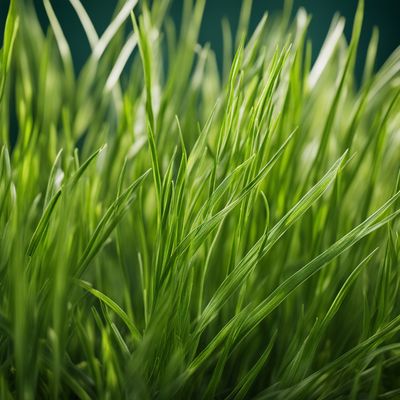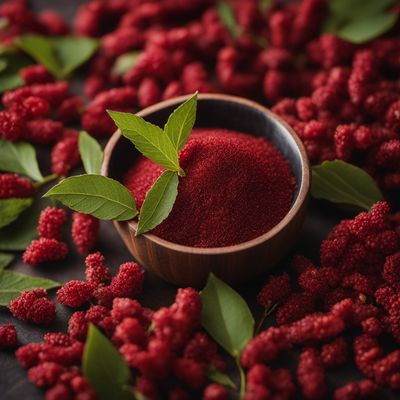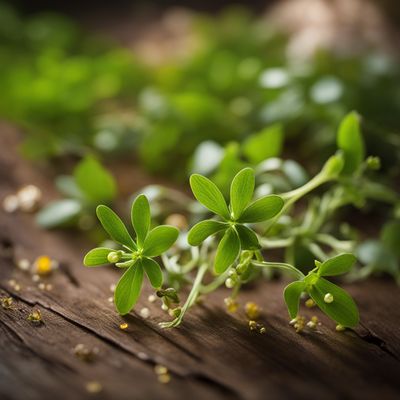
Ingredient
Tormentil infusion roots
The Healing Power of Tormentil
Tormentil infusion roots are small, gnarled roots that have a distinct earthy flavor and a slightly bitter taste. They have a firm texture and a reddish-brown appearance. These roots are often used in herbal remedies and can be brewed into a soothing tea or incorporated into culinary creations for their unique flavor profile.
Origins and history
Tormentil infusion roots have a long history of medicinal use, particularly in European herbal medicine. They were traditionally used to treat digestive issues, inflammation, and wounds. These roots were also believed to have astringent properties and were used to alleviate diarrhea and sore throats. Today, tormentil roots are still used in herbal remedies and are highly regarded for their potential health benefits.
Nutritional information
Tormentil infusion roots are low in calories and fat, but rich in tannins, which are known for their antioxidant properties. They also contain small amounts of vitamins and minerals, including vitamin C and potassium.
Allergens
There are no known allergens associated with tormentil infusion roots.
How to select
When selecting tormentil infusion roots, look for roots that are firm, with a reddish-brown color. Avoid roots that are soft, moldy, or have a strong odor. Fresh roots are typically available in specialty health food stores or can be purchased online.
Storage recommendations
To maintain the freshness and quality of tormentil infusion roots, store them in a cool, dry place, away from direct sunlight. Dried roots can be stored in an airtight container for up to a year.
How to produce
Tormentil infusion roots can be challenging to grow for amateurs, as they require specific soil conditions and a long growing season. It is best to purchase fresh or dried roots from reputable sources.
Preparation tips
To prepare tormentil infusion roots, they can be brewed into a tea by steeping them in hot water for 10-15 minutes. The tea can be enjoyed on its own or used as a base for other herbal blends. Tormentil roots can also be ground into a powder and used as a natural dye or added to baked goods for a unique flavor. Additionally, they can be infused into oils or alcohol to create tinctures or extracts.
Culinary uses
Tormentil infusion roots are commonly used in herbal remedies, such as teas, tinctures, and extracts. They can also be incorporated into culinary creations, such as baked goods, sauces, and herbal blends.
Availability
Tormentil infusion roots are commonly available in Europe, particularly in countries like France, Germany, and Russia.
More ingredients from this category » Browse all

Mexican valerian infusion roots
"The Tranquilizing Elixir: Unveiling the Secrets of Mexican Valerian Infusion Roots"

Echinacea infusion roots
The Immune-Boosting Powerhouse: Echinacea Infusion Roots

Calamus infusion roots
The Aromatic Elixir: Calamus Infusion Roots

Couch grass infusion roots
Unveiling the Power of Couch Grass Infusion: A Natural Remedy and Culinary Delight

Blue flag infusion roots
Nature's Elixir: Unveiling the Wonders of Blue Flag Infusion Roots

Seneca snakeroot infusion roots
The Healing Power of Seneca Snakeroot: Unveiling Nature's Remedy

Marshmallow infusion roots
The Soothing Elixir

Herb bennet infusion roots
The Hidden Elixir: Unveiling the Secrets of Herb Bennet Infusion Roots

Fragrant sumac infusion roots
The Aromatic Essence

Golden root infusion roots
"Nature's Golden Elixir: Unveiling the Secrets of Golden Root Infusion Roots"

Pimpernel infusion roots
The Hidden Elixir: Unveiling the Pimpernel Infusion Roots

Valerian infusion roots
The Tranquilizer: Valerian Infusion Roots